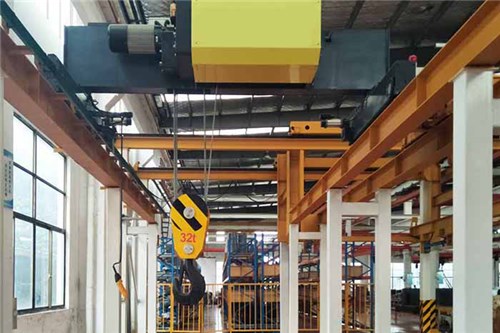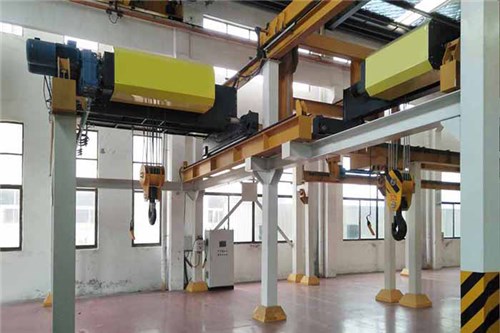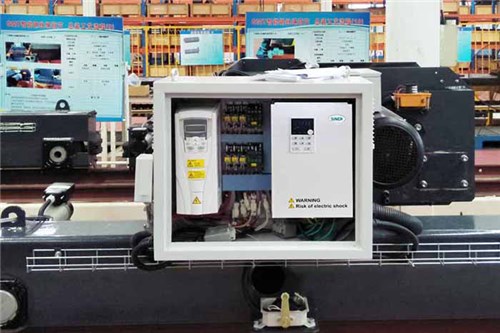1. Introduction
The gantry crane is a bridge type crane that is supported on the ground track by the legs on both sides of the bridge. It is also called a gantry crane. It is a kind of material transfer by lifting the vertical weight and horizontal movement of the heavy objects on the hook or other taking device. Heavy-duty lifting equipment. The gantry crane has the characteristics of high site utilization, large operating range, wide adaptability and strong versatility; it is widely used in construction engineering and bridge construction, power, shipbuilding, automobile manufacturing, metallurgy, mining, construction, bridges and other infrastructure. Construction.
2. Inverter control application program
The gantry crane is mainly composed of the main hook, the auxiliary hook, the cart running mechanism, the trolley running mechanism and the electric control system; the power drive mechanism adopts the frequency conversion stepless speed regulation control to improve the impact at the start and stop, and improve the operation smoothly. Sex and positioning accuracy.

2.1. Lifting mechanism: The SINCR C500 series lifting special frequency converter is used for control. The PG-free open-loop vector control mode is selected to control single or multiple motors to realize the rise and fall of the hoist, and the high and low speed conversion is realized by multi-segment number.
2.2. Large and small trolley travel mechanism: The SINCR lifting special inverter is used to control two or more motors to realize forward and reverse rotation and high and low speed conversion.


3. Conclusion
After erecting, the gantry crane can save energy by 27% after 6 months of operation; the starting is smooth, the mechanical impact is small; the positioning is accurate. About 500 of the 800 gantry cranes in the country have the possibility of frequency conversion. This kind of transformation has the possibility of further performance improvement: such as adding a frequency converter to drive the auxiliary hook; adding an encoder for the endless loop control; and configuring the touch screen to monitor the running state.